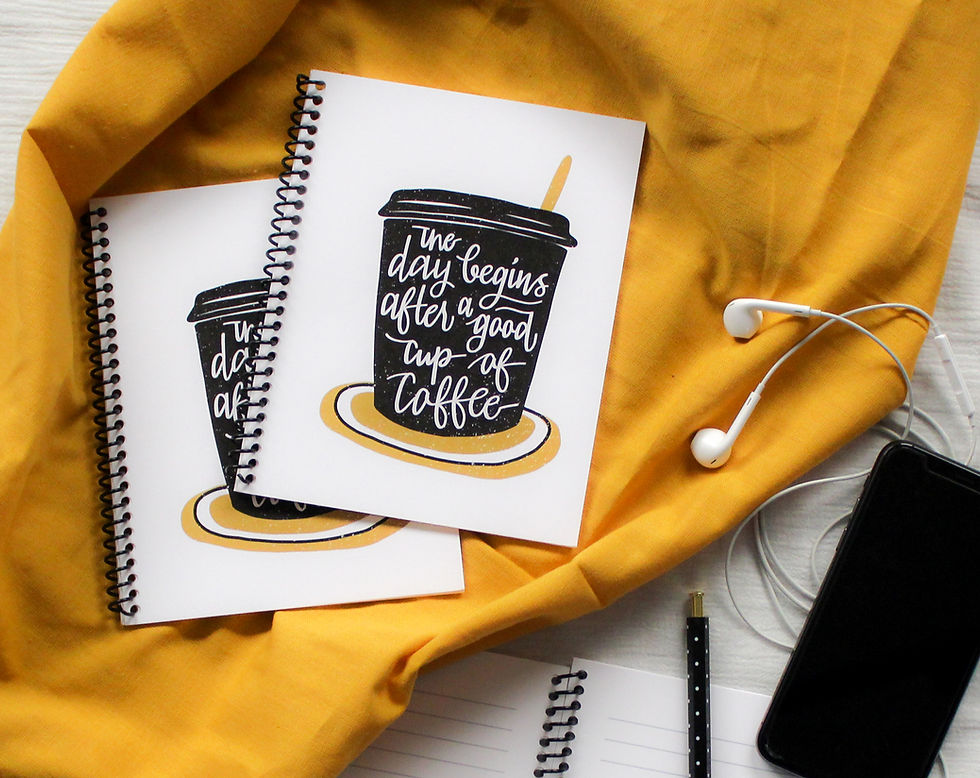Recycled Paper vs. Post-Consumer Waste (PCW) Paper: Understanding the Difference
- CatPrint Team

- Aug 30, 2024
- 3 min read
Updated: Jul 17
In today's environmentally conscious world, choosing sustainable materials is more important than ever. Two terms often come up when it comes to paper: Recycled Paper and Post-Consumer Waste (PCW) Paper. While they might seem similar, they have distinct differences that can impact your environmental footprint. Let's explore these differences and understand how each type of paper contributes to sustainability.
What is Recycled Paper?
Recycled paper is made from various sources of waste paper that are reprocessed to create new paper products. This can include:
Pre-Consumer Waste: This is waste generated during the manufacturing process, such as paper trimmings or rejects that never reach the consumer.
Post-Consumer Waste: This is paper that has been used by consumers and then recycled.
What is Post-Consumer Waste (PCW) Paper?
Post-Consumer Waste (PCW) paper is a specific type of recycled paper made entirely from paper products that have been used and discarded by consumers. This means that PCW paper is made from materials that have completed their life cycle as consumer items, such as newspapers, magazines, office paper, and cardboard. PCW paper is considered one of the most environmentally friendly paper options because it reduces the need for virgin pulp and helps divert waste from landfills.
Key Differences Between Recycled Paper and PCW Paper
Source of Materials:
Recycled Paper: This can include both pre-consumer and post-consumer waste.
PCW Paper: Exclusively made from post-consumer waste.
Environmental Impact:
Recycled Paper: Reduces waste and the need for virgin pulp, but the environmental impact varies based on the proportion of pre-consumer and post-consumer content.
PCW Paper: This has a higher environmental benefit as it focuses solely on repurposing materials that consumers have already used, thereby reducing landfill waste and conserving resources.
Availability and Usage:
Recycled Paper: Widely available and used in many products, from office paper to packaging.
PCW Paper: Increasingly available as demand for environmentally friendly products grows, often used in products where a high level of sustainability is desired.
Benefits of Choosing Recycled and PCW Paper
Conservation of Resources: Both types of paper reduce the need for virgin pulp, which conserves forests and reduces deforestation.
Energy Savings: Manufacturing recycled and PCW paper generally requires less energy than producing paper from virgin fibers.
Waste Reduction: Both options help reduce the amount of waste sent to landfills.
Lower Greenhouse Gas Emissions: Recycling paper can result in lower greenhouse gas emissions compared to producing new paper from scratch.
Making the Right Choice
When choosing between recycled paper and PCW paper, consider the following:
Environmental Goals: If your priority is the highest level of sustainability, opt for PCW paper as it has a greater positive impact on the environment.
Availability: Check with your supplier for the availability of both types of paper and choose the one that best fits your needs and sustainability goals.
Cost: While PCW paper can sometimes be more expensive, the environmental benefits can justify the cost, especially for eco-conscious businesses and individuals.
CatPrint Paper Options
Here are CatPrint's Recycled and PCW paper options along with their respective values:
Paper Name | Recycled Content | PCW Content |
Heavy Card Stock - Recycled | 100% | 100% |
Heavy Card Stock - Felt | 30% | 30% |
Heavy Card Stock - Cream Felt | 30% | 30% |
Heavy Card Stock - Kraft | 30% | 30% |
Navy Card Stock | 30% | 30% |
Black Card Stock | 30% | 30% |
Magnet Stock | - | 10% |
Understanding the difference between recycled paper and post-consumer waste paper is key to making eco-friendly choices. Both types are better for the environment than virgin paper, but PCW paper is significant because it reuses consumer materials. However, these are not the only ways to make paper environmentally friendly– UP NEXT: Understanding the FSC Mix Credit paper label.
Questions or Concerns? Contact the Experts.
Contact our Customer Service Team by emailing support@catprint.com or calling 877-228-7768 if you have any questions about choosing the right paper for your project.









Comments